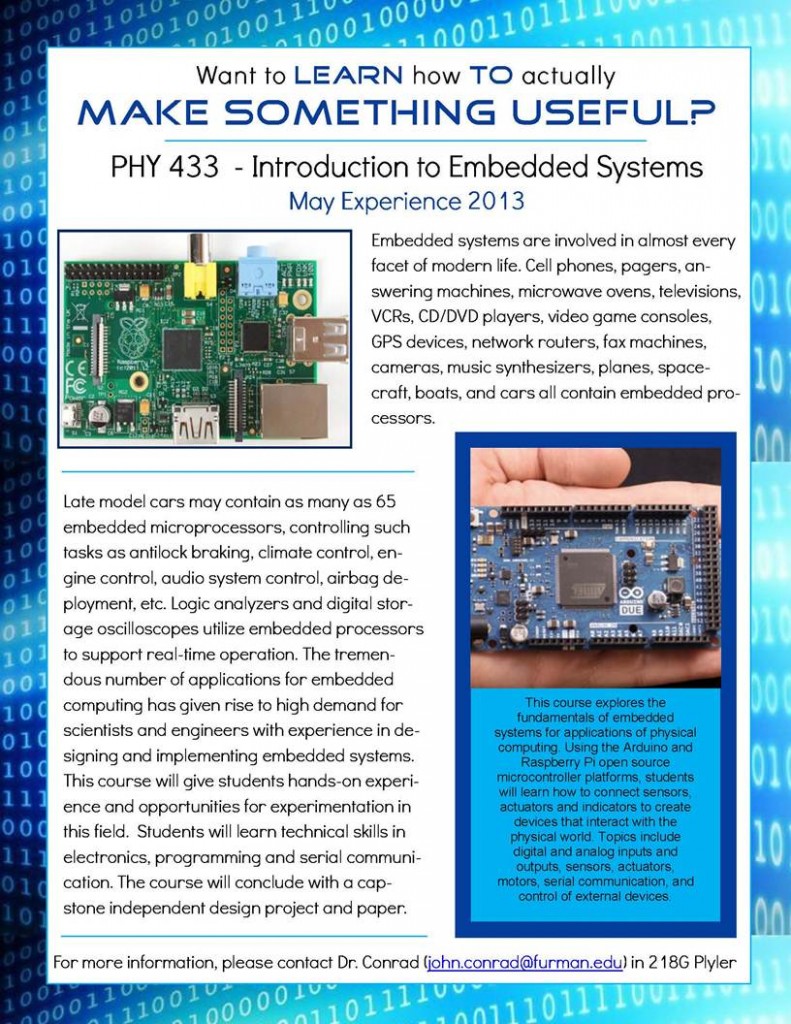On March 26, 2013 Furman hosted a workshop “Introduction to Microcontrollers.” This half-day introduction to Atmel microcontrollers was conducted by Mr. Bob Martin, who is the manager of the MCU Central Applications group at Atmel Corporation, San Jose, California. Atmel is a leading manufacturer of semiconductors and microcontrollers for consumer, communications, computer networking, industrial, medical, automotive, aerospace and military markets. The workshop was attended by faculty, staff and students from departments of physics, chemistry, mathematics, and computer science. Approximately 40 participants gained hands-on experience with state-of-the-art microcontroller programming and applications, as taught by an industry leader in the field. The workshop was organized by Prof. John Conrad of the Furman Physics Department.
The purpose of the workshop was to introduce members of the Furman community to current industrial practices in embedded systems technology. Embedded systems are involved in almost every facet of modern life. Cell phones, pagers, answering machines, microwave ovens, televisions, VCRs, CD/DVD players, video game consoles, GPS devices, network routers, fax machines, cameras, music synthesizers, planes, spacecraft, boats, and cars all contain embedded processors. Late model cars may contain as many as 65 embedded microprocessors, controlling such tasks as antilock braking, climate control, engine control, audio system control, airbag deployment, etc. Logic analyzers and digital storage oscilloscopes utilize embedded processors to support real-time operation. The tremendous number of applications for embedded computing has given rise to high demand for scientists and engineers with experience in designing and implementing embedded systems. The Atmel Workshop on Microcontrollers gave students, faculty and staff hands-on experience and opportunities for experimentation in this exciting field.
